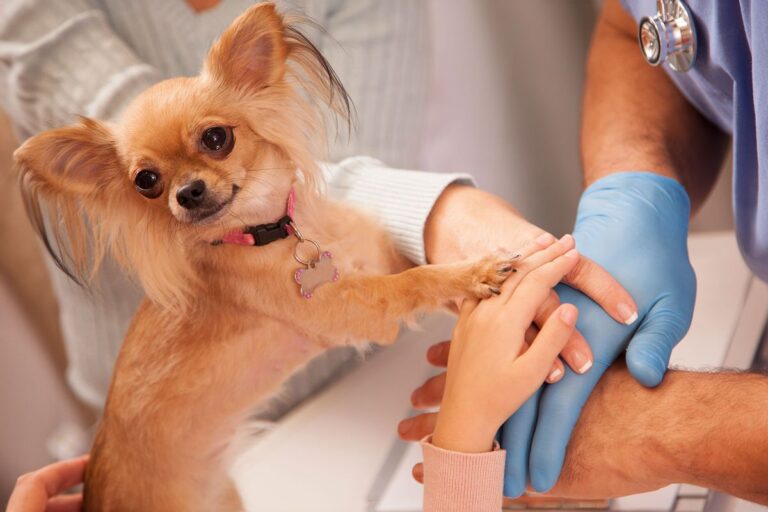Not all TikTok trends are as scary and annoying as drinking borax or playing pranks on strangers. Some memes are heartwarming. In the so-called “hands-in” challenge, humans sit in a circle next to their dogs (and sometimes cats) and place their hands on top of each other in the same way that players on a sports team cheer on each other. In the best scenarios recorded by TikTok users (see examples here and here), the dog puts its paw on top of the human’s hand.
“It means nothing how ‘smart’ a dog is, how much he loves his owner, how much he cares for his owner, or how much he feels like a part of the family.”
Seeing these confused yet happy dogs usually elicits smiles and cheers from people, but it raises the question: do these pets really understand what’s going on, or are they just imitating their human companions?
This is not a trivial question at all, and it has some interesting implications for dog intelligence, including what is called theory of mind.
“The most likely explanation is that dogs behaving this way have already been trained to ‘paw up or shake hands,’ and so they interpret the human gesture as a similar request,” Dr. James Serpell, an animal behavior expert at the University of Pennsylvania, told Salon. “Some dogs seem to think before they react, which suggests they’re a bit unsure of the ‘right’ response.”
https://tiktok.com/@danniwellss/video/7368975758582156577
Dr Catherine Reeve, lecturer in animal welfare and behaviour at Queen’s University Belfast’s School of Psychology, agreed that the most likely explanation for the dog’s behaviour is that it is learned behaviour. Dr Reeve observed that the dog in the video may have seen its owner holding its hand in a similar way to how dogs associate it with cues and responded accordingly.
“If they had learned to lift their paws, they might be more likely to do this,” Reeve says. “If they hadn’t learned to lift their paws, they might not do this.” have “If a dog has learned the paw, but the way the person holds the hand does not resemble the normal physical cue of ‘paw out,’ the dog may not perform the behavior. Finally, if the dog has a history of being punished for attempting a behavior or for performing the wrong behavior, the dog may not perform or attempt this particular behavior.”
So, when a dog is faced with the task of “putting his hand in,” there could be a lot going on in his mind. However, if a dog fails the task, we shouldn’t assume that he doesn’t love his owner or that he isn’t smart.
“There are lots of reasons why a dog might not behave this way,” Reeve says, “and it has nothing to do with how ‘intelligent’ the dog is or how much he loves and cares for you and feels like a part of the family.”
Rather, the “hands-in” challenge may give animal behaviorists a goal to aim for. According to Monique Udell, PhD, a professor at Oregon State University, the public interest in the “hands-in” challenge means the public is more interested in what’s going on in a dog’s brain when it’s performing this behavior. The solution is to do more research, and Dr. Udell told Salon that “it’s hard to say for sure what’s going on without doing controlled studies” to look at things like whether the dogs had been trained before.
“To accurately predict why some dogs will behave in a certain way, we need to know the dog’s learning history and how many attempts the dog made before performing the behavior while filming,” Udell said.
Want more health and science news delivered to your inbox? Subscribe to Salon’s weekly newsletter, Lab Notes.
“Some dogs respond to this type of training quicker than others.”
Serpell offered some insight into how the research would be conducted: Indeed, he argues that there is already extensive knowledge about how to train dogs to perform exactly the kinds of behaviors seen in the “hand in” challenge videos.
“A new paradigm in dog training, called ‘do-as-i-do,’ in which dogs are trained to mimic the actions and attitudes of their owners/handlers, is fairly well established,” Serpell said. “Some dogs respond much more quickly to this type of training than others, suggesting that they have more insight into their owners’ intentions and are more willing to cooperate.”
As Serpell says, dogs are, for the most part, eager to please their owners — they just need guidance on how to do it.
“Either way, the behavior is immediately reinforced by the owner’s actions (consciously or unconsciously),” Serpell says. “After all, imitation is the sincerest form of flattery.”
But what if your dog simply doesn’t want to step in? As Reeve explained, this has absolutely no bearing on any serious issues like whether your dog has the ability to understand you or whether you feel like you’re part of the family.
“For example, my dog has a history of allergic reactions to his paws, and his paws are very sensitive, so he doesn’t really like having them touched or held,” Reeve says. “He probably wouldn’t do this, but if I put my paw out, he’ll do the ‘paw wag’ thing and put his little paw on my leg. If I did the same thing with my dog, but with my paw instead of my hand, I’m sure we’d get a similar reaction.”

